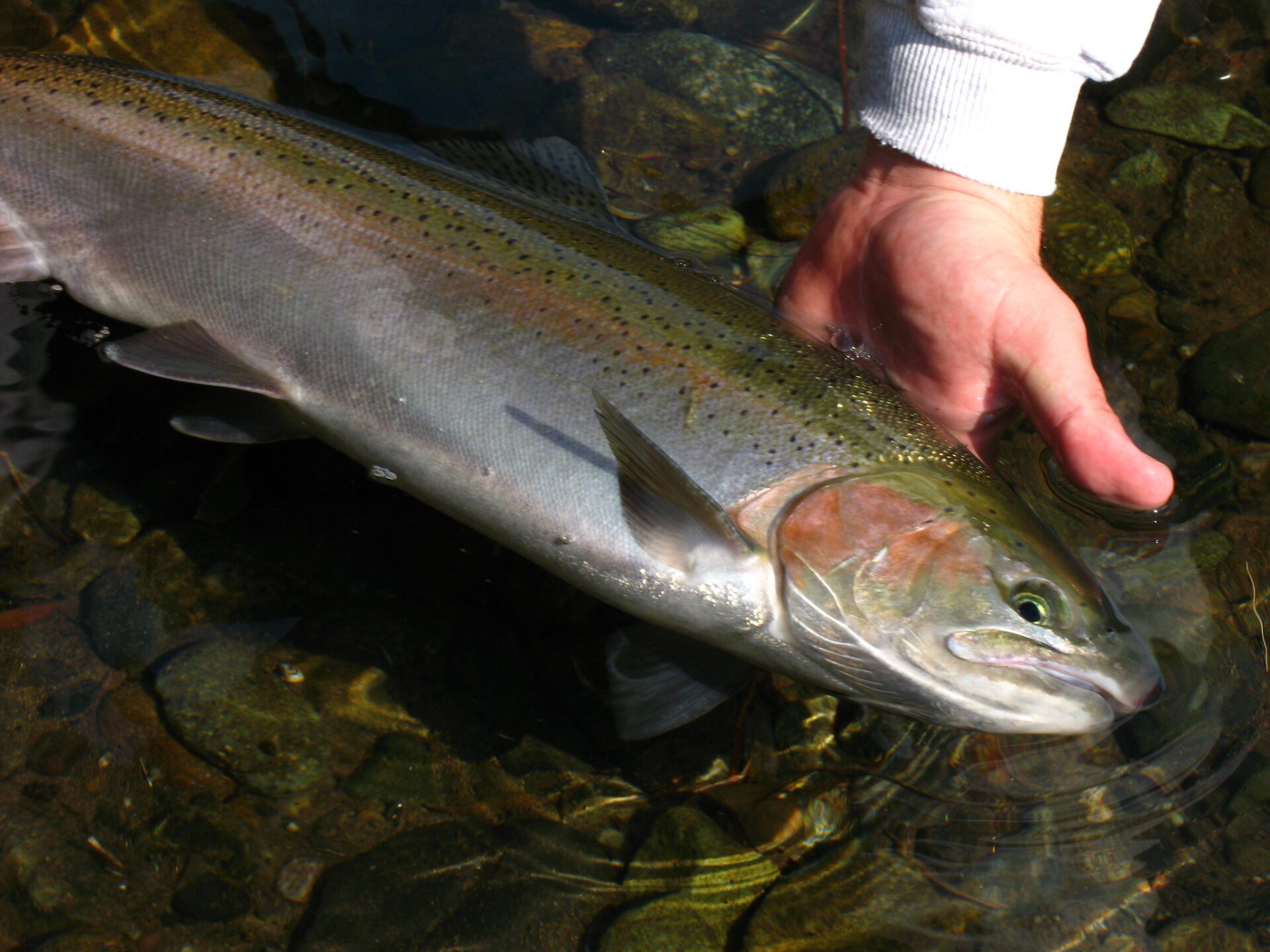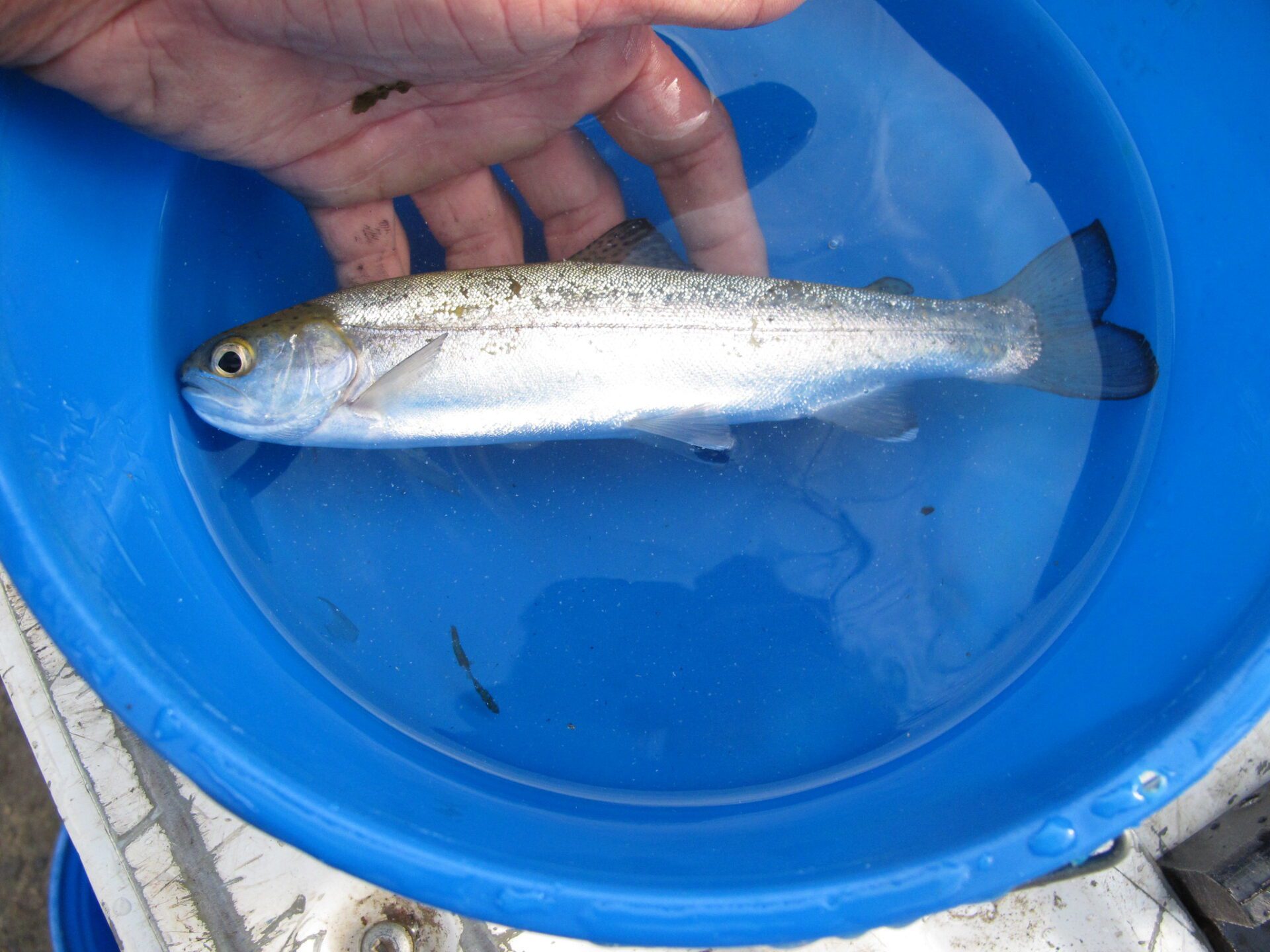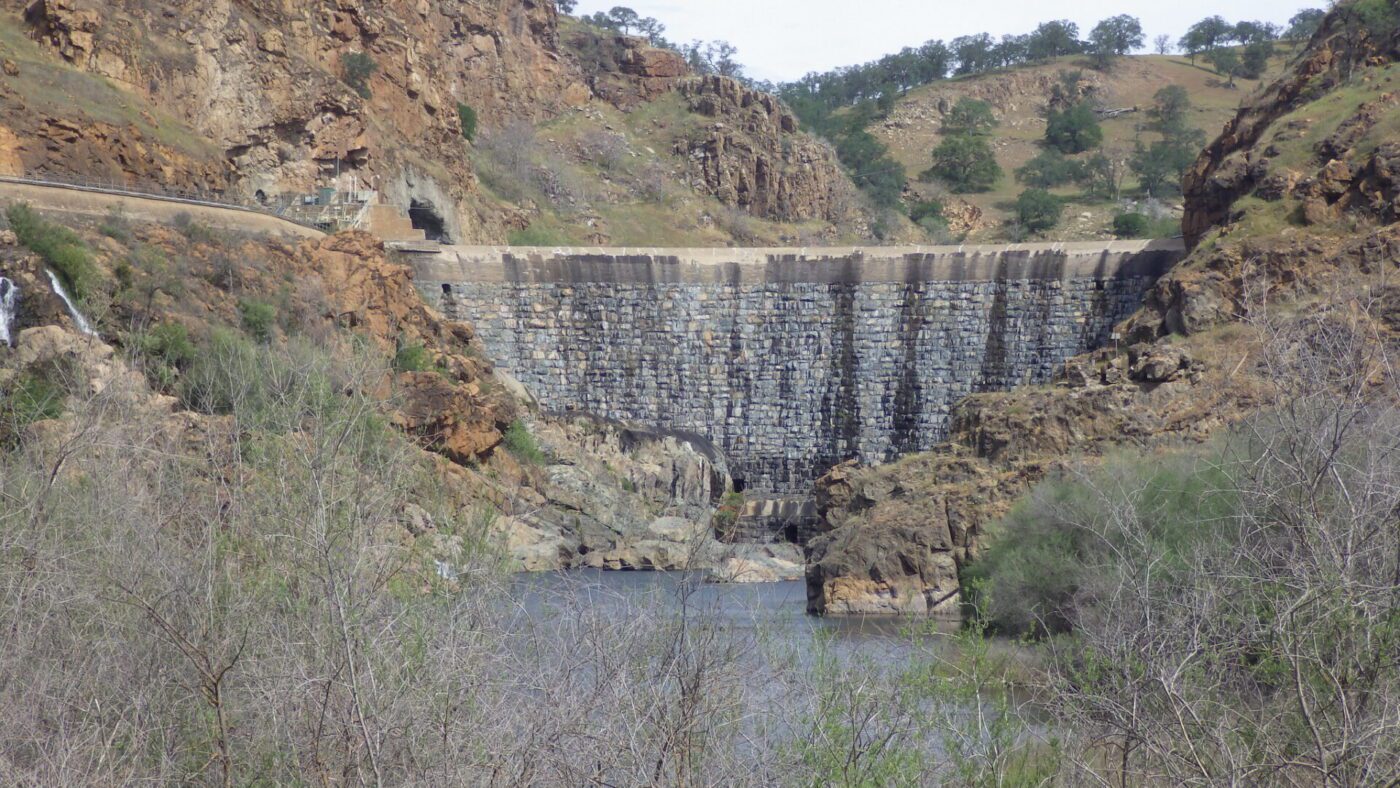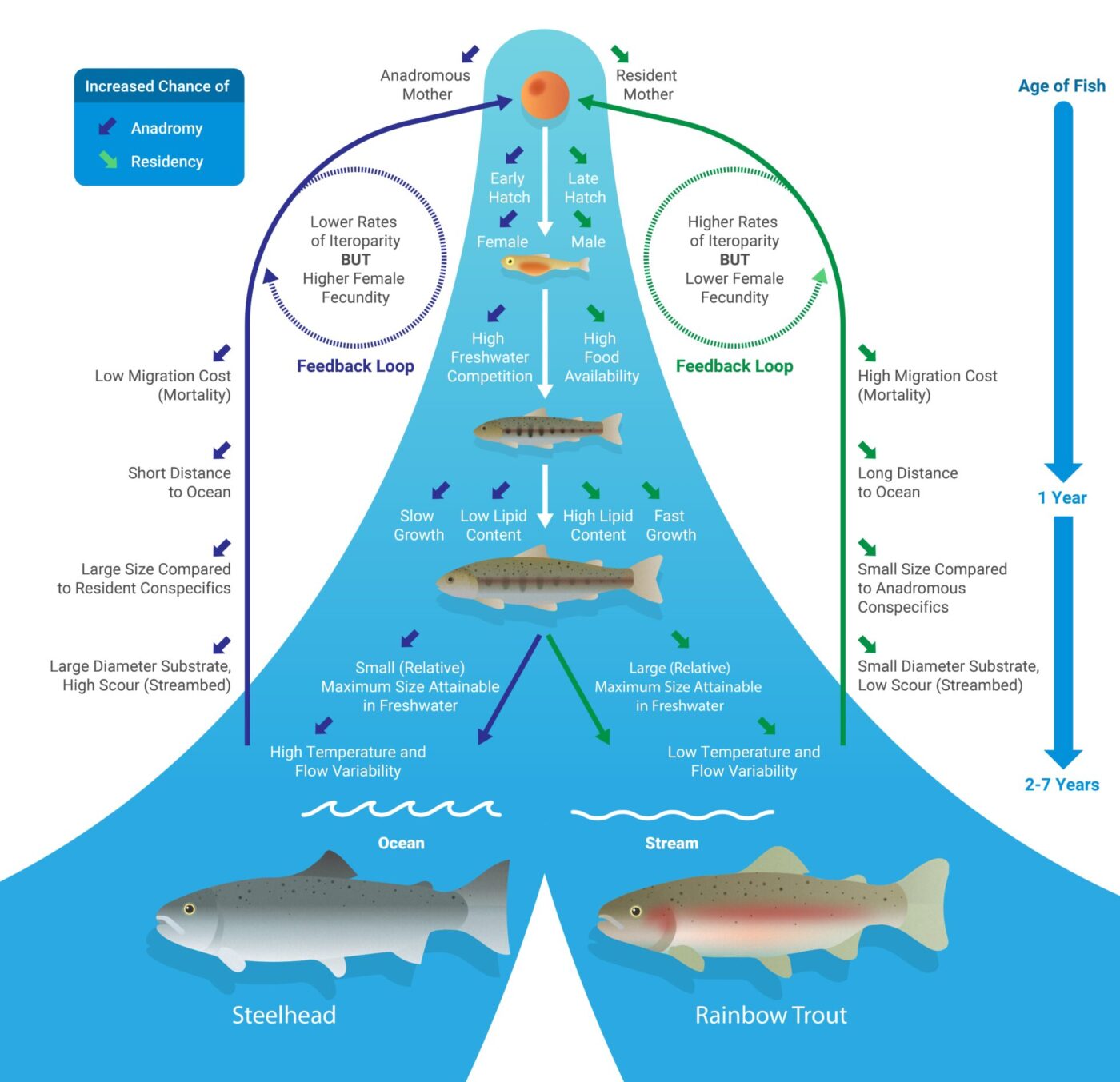Tuesday January 16, 2024

The elusive steelhead (Oncorhynchus mykiss) is somewhat of a white whale on many North American anglers’ lists. Admiration for the species is well-earned as its remarkable adaptability, relentless persistence in challenging environments, and unique characteristics have provided it quite the reputation. Distinguished from their homebody brethren, steelhead are the anadromous life-history form of rainbow trout, meaning they migrate to the ocean as juveniles and return to freshwater streams as adults to spawn. Juvenile steelhead will generally spend one to two years rearing in freshwater before migrating to estuarine areas, and then into the ocean. Steelhead will then spend one to three years maturing in the ocean feeding on shrimp, krill, fish and other marine prey before returning to freshwater to spawn. Despite the distinctive abilities that allow steelhead to adapt to many different environments – including tolerances for a wide range of temperature and flow conditions – the anadromous lifestyle of these fish puts them at great risk as humans have significantly modified their historic migratory corridors. In fact, these very challenges led to the listing of California Central Valley Steelhead as Threatened under the Endangered Species Act in 1998.

A steelhead smolt.
Moving between rivers and the ocean is a big gamble for young steelhead, and adding obstacles like dams and increasing drought conditions into the equation makes migration even more challenging. Dams limit steelhead range by blocking access to upstream spawning habitat, disrupt natural flow patterns that steelhead rely on as a migration cue, and alter downstream temperatures and food webs dynamics. Similarly, water diversions, agriculture, and urban development have dramatically altered the quality and availability of steelhead habitat. Unlike their cousins, the Chinook salmon (O. tshawytscha), steelhead do not always die after spawning. They may remain in freshwater or return to the ocean and migrate back upstream to spawn again in future years. This flexibility allows them to successfully survive and spawn in watersheds that may only have suitable conditions every few years – such as the rivers of Southern California – places Chinook could never endure due to their more rigid lifecycle.

The fact that steelhead do not die after spawning can make it more difficult for biologists to monitor and assess steelhead populations. For example, when salmon die after spawning, biologists can collect their carcasses and take samples to gather information about individual fish and populations as a whole. Because steelhead may live to spawn another day, gathering data on their populations typically requires capturing or detecting live individuals, a task akin to finding a needle in a haystack. However, there are methods biologists can employ to catch a glimpse of these elusive fish and collect the data necessary to monitor their populations. One such method is the installation of camera monitoring systems which are primarily used in weirs or in fish ladders that allow spawning fish to pass upstream through dams. These cameras can collect information on the numbers, sizes, and origins (hatchery or wild) of returning adult steelhead. Another approach is to tag and track steelhead, either by implanting acoustic telemetry or passive integrated transponder (PIT) tags into captured wild fish or into hatchery fish prior to their release. Scientists may also collect scale and tissue samples that can be used for aging and genetic analyses during tagging events. A multi-year study to evaluate the abundance and reproductive contribution of steelhead in the Stanislaus River is currently underway, implemented by FISHBIO and collaborators on behalf of the US Bureau of Reclamation, combining the above-mentioned approaches.

A generalized conceptual diagram of O. mykiss life history pathways and the factors that influence them (source: Eschenroeder et al. 2022).
In recent years, ever-changing weather patterns and inconsistent flow conditions have made it more difficult to monitor steelhead populations. To adapt to this challenge, biologists have developed alternative approaches to learn about and monitor steelhead populations. Given that resident and anadromous individuals form polymorphic populations within rivers – meaning they may spawn with one another – biologists are increasingly incorporating resident rainbow trout into their investigations. Rainbow trout, which are present year-round and often more abundant than their ocean-going counterparts, may be more easily sampled via snorkel, hook-and-line, and electrofishing surveys. These resident-focused monitoring approaches are currently being tested in the Stanislaus River, with hopes that studying resident rainbows will help provide insight into the much rarer anadromous steelhead that occur in the system. There is still much to learn about populations of these remarkable fish, and novel approaches to monitoring will be essential to guiding management actions to conserve and restore their populations in a changing environment.
This post is part of our Species Spotlight Series to commemorate the ESA’s 50th anniversary. Follow these posts to learn about threatened and endangered freshwater fish and the role the ESA plays in their continued conservation!
Header Image: An adult steelhead.
This post was featured in our weekly e-newsletter, the Fish Report. You can subscribe to the Fish Report here.
